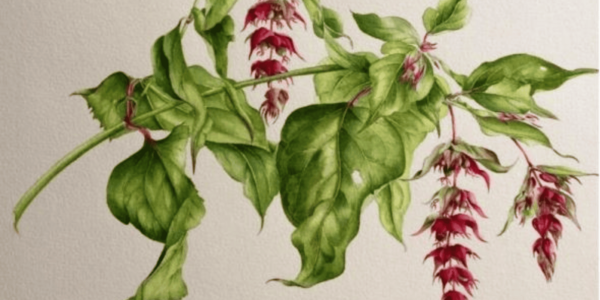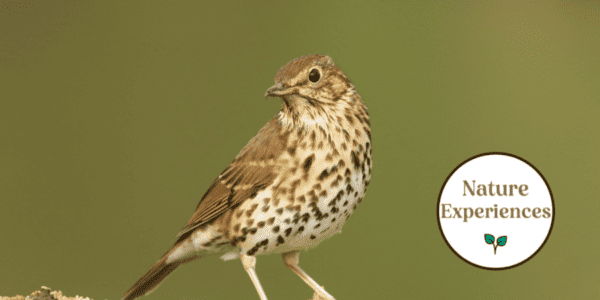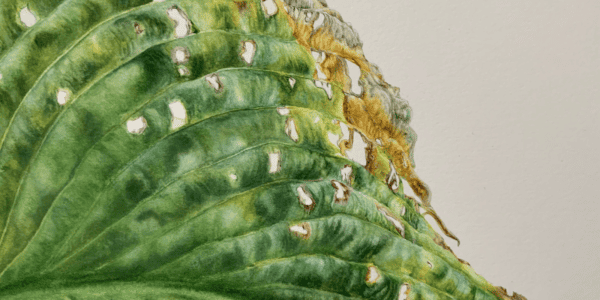It’s not possible for a botanist or artist to identify a plant without a full appreciation of its unique design. It is easy to overlook crucial detail when one is overwhelmed by a heavenly scent and magical shades of colour. ‘Understanding Flowers for Artists and Aspiring Botanists aims to help those who want to deepen their knowledge of floral structure.
Read more
But it is usually the precise detail of several other (often seemingly insignificant) features that, in combination, create the characteristic identity of individual species. And without focused and accurate observation any identification is unreliable and any depiction will miss the unique essence of the plant.
Amateur botanists and botanical artists (even those who are not illustrators) quickly realise the importance of careful observation of botanical features. Although no two specimens are exactly alike, certain features are consistent and characteristic of a particular species. For instance a poppy always has four petals while many other species have five. To paint a poppy with five petals would instantly ‘look wrong’ and detract from what would otherwise be a beautiful painting. And the botanist who fails to notice the number of petals, would miss an important clue to the identity of their ‘unknown’ plant. The number of petals maybe an unlikely feature to get wrong, but beginners in both disciplines often find it confusing to know which features are important to focus on.
This course is aimed at those who would like to deepen their understanding of floral structure, in particular, in order to improve their skills at depicting and/or identifying the plants around them. We will learn how to look at plants.
Day one will be devoted to understanding floral structure and the important aspects of different features. We shall look at how the flowers are arranged on the plant and at the design of the fruits that develop after the flowers. We will spend a lot of time considering and describing the crucial features of the plants that grow in the vicinity of the Mill.
On day two we will stray further afield by foot, to hunt out a fresh range of plants that frequent the beautiful and diverse habitats that occur in this special corner of Suffolk. While some may choose to develop their skills at plant identification, based on their focused and accurate observations, others may prefer to practice creating accurate sketches and illustrations. (Please note that your tutor is not skilled to guide your artistic talent, but she is a demon at spotting botanical inaccuracies!)
Please note: This course is not part of the Biodiversity learning framework, this course is organised by Flatford Mill and the tutor.
About the tutor
Ros Bennett
Ros Bennett is a botanist and ecologist. She was formerly a full time tutor at Flatford Mill and then organiser and leader of courses for FSC Overseas. She has written books on flowers and has taught courses on wild flowers to all age groups.
About Flatford Mill
We have four buildings that are used for visitor accommodation. Whilst most rooms are either en-suite or have a dedicated bathroom, there are some rooms in The Mill that share showers and toilets at the end of the hall. If this is un-suitable for you please make the office staff aware upon booking or as soon as possible.
Please be aware that you are visiting a Field Centre that caters in the main for school parties; the accommodation is basic and dormitory style, but warm and comfortable.
Explore our range of nature courses hosted by our engaging tutors and learn from their expertise and skills. Our art courses are a chance to meet like-minded people, a chance to unwind from everyday life, and a great opportunity to experience the UK’s glorious countryside surrounding our field centres.
Example Timetable
Arrival Day
Check-in is between 1600-1800, if you are arriving after 1800 please advise us, so we can ensure you are advised of access codes, room key location, and room location.
You will meet the tutor at dinner, and you will have your first session after dinner.
What's Included
Full board accommodation and picnic lunch is available for resident bookings only.
Refreshments are included for all, but non-resident bookings are advised to bring lunch with you.
Before You Attend
What to bring
As the course involves outdoor work you will need a Thermos, lunchbox, waterproof clothing (available on loan from the centre) and stout shoes or boots.
Also, please bring the following with you if you can:
- A x10 magnification hand lens (available on loan or purchase @ c. £9.00)
N.B. It is not necessary to purchase any books before the course or to bring any with you. However you might like to have with you, a picture book that arranges its flowers in family order such as one or other of the first three listed below - The Wild Flower Key by Rose and O’Reilley (Warne)
- The Wild Flowers of Britain and Ireland by Fitter, Fitter and Blamey (Bloomsbury Natural History)
- Collins Flower Guide by Streeter (Harper Collins)
- New Flora of the British Isles by Stace (CUP ideally 4th edit)
- If you don’t have these items or books, they may be borrowed from the Centre.
Opportunities to attend this course
This course is not currently available to book. Dates will follow soon.
Sign up to our Email Newsletter





